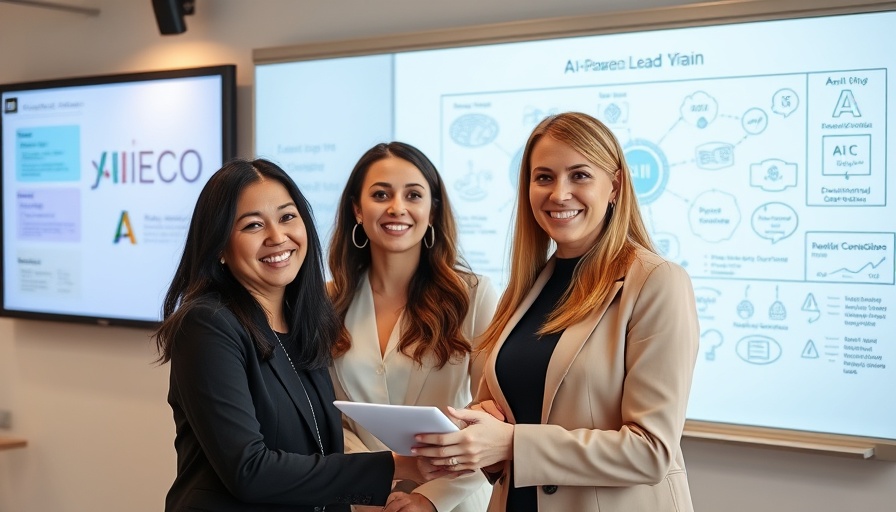
Unlocking Knowledge with Graph Retrieval Augmented Generation
As the digital landscape evolves, the need for effective data management and retrieval becomes more critical. Enter Graph Retrieval Augmented Generation (GraphRAG), a novel method revolutionizing how businesses and educational institutions interact with data. Unlike traditional vector search methods, GraphRAG utilizes knowledge graphs to create a structured and dynamic interplay of data points, enhancing the depth of information retrieval that businesses rely on.
In 'GraphRAG Explained: AI Retrieval with Knowledge Graphs & Cypher', the video elucidates on how innovative retrieval methods can redefine data interaction, prompting us to delve deeper into their broader applications and implications.
Understanding Knowledge Graphs
At the core of GraphRAG is the concept of a knowledge graph—a sophisticated structure that depicts relationships between various data points, also known as nodes or vertices. Each edge (relationship) holds as much significance as the nodes themselves, allowing for nuanced queries and information retrieval. This method transforms unstructured data into structured formats, making it more accessible for analysis using AI tools. For African business owners and educators, this could mean extracting insights from complex datasets, whether they are related to market trends or educational outcomes.
GraphRAG vs. Traditional Search Methods
GraphRAG isn't merely an alternative; it's a next-generation solution that addresses the limitations seen in traditional vector-based systems. Whereas vector databases may yield results based on semantic similarities, GraphRAG can leverage a knowledge graph's intricate structures to provide holistic insights from an entire dataset. This capacity is invaluable for organizations seeking comprehensive answers from their datasets without sifting through unrelated information.
Implementing GraphRAG: A Step-by-Step Guide
Setting up a GraphRAG system involves several steps, most notably creating and populating your knowledge graph. Begin by utilizing a Large Language Model (LLM) to extract meaningful entities and relationships from your unstructured data. Using tools like Neo4j, even those without extensive technical backgrounds can establish a local database for their projects. The LLM helps streamline the conversion of raw text into a systematic knowledge graph, making this technology accessible to various users—from tech enthusiasts to policy makers.
Practical Applications for the African Business Landscape
The implications of employing GraphRAG are profound for African businesses. They can tap into a wealth of data, redefining how they understand customer interactions and market dynamics. By utilizing LLMs for generating Cypher queries, businesses can receive tailored insights that might otherwise be obscured in a more fragmented information retrieval system. This capability allows organizations to craft informed strategies based on comprehensive analyses of their operational data.
Future Predictions: The Role of AI in Africa
With the swift integration of AI technologies, the potential for knowledge graphs and GraphRAG systems is enormous. As more organizations in Africa adopt these innovative data retrieval methods, we can anticipate a boom in data-driven decision-making processes. Businesses will not only improve their operational efficiency but also enhance their capacity to innovate by harnessing insights from complex datasets.
Challenges and Considerations
While the benefits are clear, the deployment of GraphRAG systems is not without challenges. Organizations must consider their existing data infrastructures and ensure compatibility with these advanced systems. Additionally, the skill gaps in understanding and implementing LLMs and knowledge graphs may hinder some organizations. However, educational initiatives focusing on AI and data governance can empower the workforce, leading to more widespread adoption of technologies like GraphRAG.
Conclusion: Embracing the Future of Data Retrieval
The emergence of GraphRAG represents a pivotal shift in how organizations access and interact with data. For African business owners, tech enthusiasts, and educators, embracing such cutting-edge technologies is crucial for remaining competitive in a fast-paced digital economy. To foster a culture of innovation and analytical thinking, prioritizing AI policy and governance development will ensure that these technologies benefit a broad range of stakeholders.
 Add Row
Add Row  Add
Add 




Write A Comment